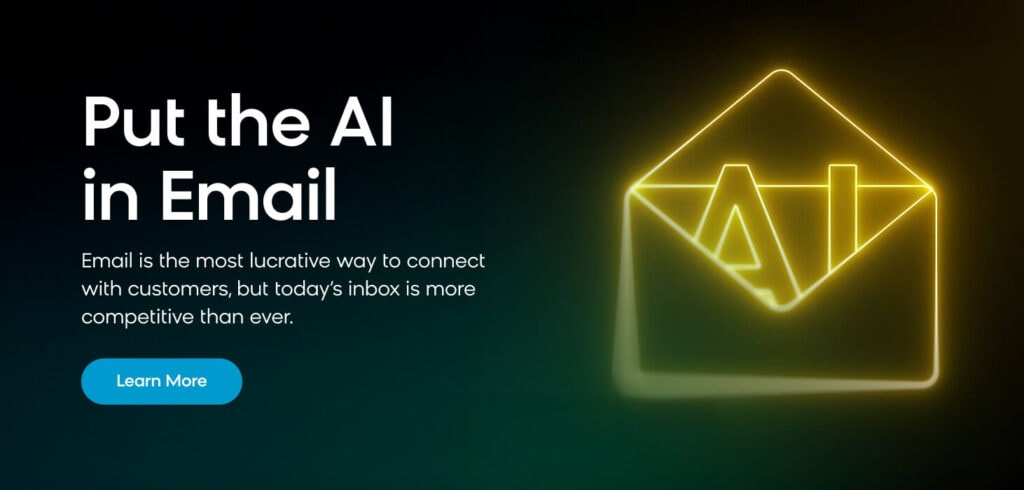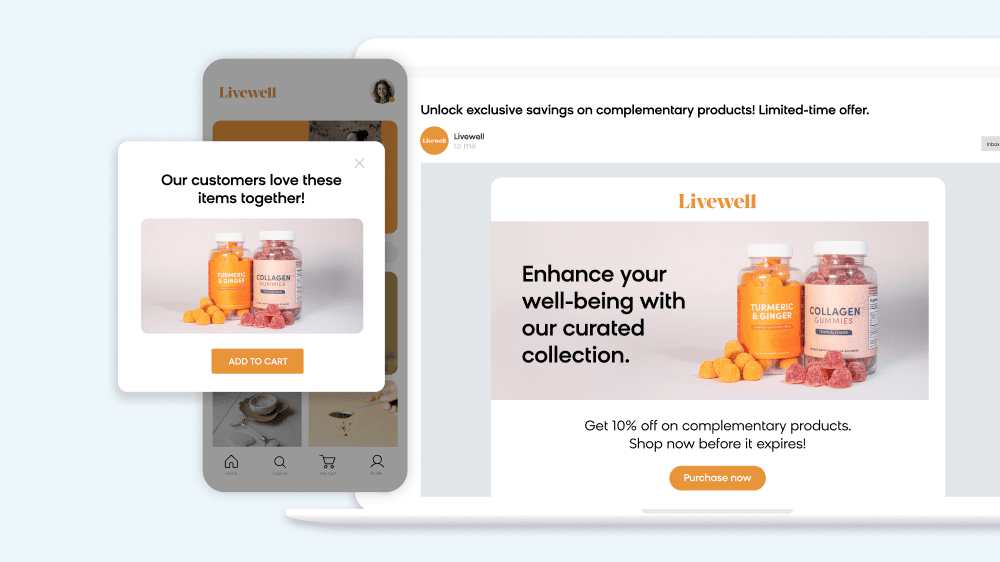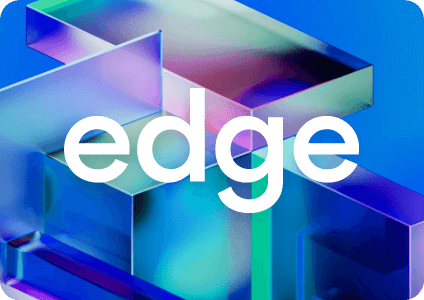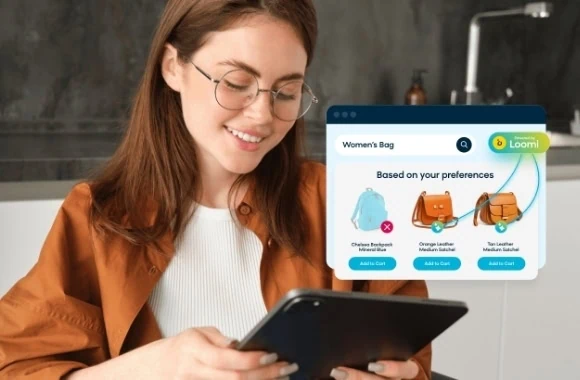Stop sending static emails.
Nowadays, your customers expect immediacy, relevance, and seamless cross-channel experiences that traditional automation simply cannot deliver. Batch-and-blast campaigns and rule-based workflows have become relics of a simpler time when inboxes weren’t oversaturated and customer expectations weren’t shaped by Netflix-level personalization.
Modern enterprises are transitioning to AI-native, agentic platforms that intelligently orchestrate personalized experiences at every touchpoint. These systems don’t just follow predetermined rules — they learn, adapt, and respond to your customer behavior in real time. Platforms like Bloomreach Engagement, powered by Loomi AI, represent this fundamental shift toward autonomous marketing intelligence.
The numbers tell the story: 88% of digital marketers now use AI in their day-to-day tasks, with email personalization leading adoption rates. Meanwhile, 71% of marketers plan to invest at least $10 million into AI over the next three years, up from 57% in 2024. The reason? Your customers now interact with your brand across multiple channels within minutes, expecting each touchpoint to reflect their latest behavior and preferences.
Enterprise brands need to move beyond traditional email service providers (ESPs) if they want to drive meaningful results. Read on to learn how to use AI to transform enterprise email marketing into a revenue-generating machine.
What “Enterprise Email Marketing” Actually Means in 2025
Legacy ESPs are fundamentally misaligned with modern customer expectations. Today’s enterprise email marketing demands capabilities that most traditional platforms simply cannot provide, regardless of configuration or third-party integrations.
This evolution represents a foundational shift in how marketing technology operates. Think of upgrading from a traditional thermostat to a smart home system — the old approach follows rigid rules, while modern systems learn your patterns and optimize automatically.
The New Foundation: Intelligence Over Automation
Real-time, predictive personalization forms the foundation of modern enterprise email marketing. Advanced systems analyze your customer behavior, purchase history, and engagement patterns to predict next-best actions across lifecycle stages. This goes beyond inserting first names — it means dynamically adjusting product recommendations, offer timing, and content themes based on individual customer intent signals that drive measurable revenue growth.

Smart segmentation replaces static demographics with behavior-driven, contextual audiences that evolve in real time. Instead of manually updating segments monthly, AI identifies emerging patterns and automatically adjusts targeting as customer behaviors shift to improve conversions.
Unified customer data eliminates the data silos that plague most enterprise marketing stacks. Leading platforms process behavioral, transactional, and engagement data in real time, not through batch imports that introduce delays and reduce campaign effectiveness.
Omnichannel Intelligence That Drives Revenue
Cross-channel orchestration coordinates experiences beyond email, connecting WhatsApp, SMS, web, and mobile app touchpoints to maximize customer lifetime value. When your customer abandons a cart, the system might trigger a personalized email, follow up via SMS, and customize the website experience — all based on the individual’s preferred communication channels and timing patterns that generate higher conversion rates.
Generative content automation produces dynamic offers, product recommendations, and visual elements at scale, with some firms cutting content creation costs by up to 62%. AI generates subject lines, optimizes send times, and creates personalized content variations while maintaining brand consistency.
Autonomous optimization continuously tests and refines campaigns to improve ROI. The system automatically runs A/B/n tests on subject lines, send times, content variations, and journey flows, implementing winning variations and delivering compound performance improvements that accelerate over time.
Solving the Real Problems Holding Back Your Enterprise Email
Your marketing team faces persistent obstacles that limit email program effectiveness and drain resources. Traditional approaches require extensive IT support, manual data management, and time-intensive optimization processes. Autonomous platforms eliminate these friction points through intelligent automation that improves efficiency and results.
Understanding these challenges is crucial because they represent the hidden costs that make traditional email marketing increasingly inefficient as your business scales. Here are the four biggest pain points enterprise brands face today with email marketing, and how AI helps solve them.
“Campaign updates require too much IT involvement.” Modern platforms like Bloomreach Engagement provide no-code journey builders that let you create, test, and deploy sophisticated workflows independently. AI can easily handle complex logic without requiring technical expertise or development resources — reducing time-to-market while improving campaign agility.

“Customer data remains siloed across systems.” With a sophisticated customer data engine, you can unify behavioral, transactional, and engagement data in real time, eliminating batch processing delays and data inconsistencies that hurt personalization effectiveness. This allows you to access complete customer profiles without depending on data engineering teams for integrations, accelerating campaign development and improving targeting precision.
“Manual testing consumes excessive time and resources.” AI optimization runs continuous experiments on subject lines, send times, content variations, and audience segments without consuming your team’s bandwidth. With AI-driven contextual personalization, you can take optimization a step further and personalize on an individual level instead of only using an A/B test winner.
“Scaling personalization demands unrealistic headcount increases.” Generative AI produces personalized content, product recommendations, and dynamic offers at scale without proportional team expansion. A single marketer can manage many more content variations across multiple audience segments without having to significantly increase production time, dramatically improving team productivity and campaign reach.
The Omnichannel Revenue Reality
Your email marketing cannot succeed in isolation. Modern customers interact with your brand across multiple touchpoints within short time periods, expecting consistent, personalized experiences regardless of channel. Intelligent orchestration coordinates these interactions to create seamless customer journeys that maximize engagement and revenue.
This interconnected approach represents a fundamental shift from channel-specific campaigns to unified customer experience management that drives superior business outcomes.
Coordinated Experiences That Drive Results
Real-time offer coordination ensures your customers receive consistent messaging across email, SMS, WhatsApp, web experiences, and more, eliminating the mixed signals that reduce conversion rates. When a customer views a product online, AI might trigger a personalized email with related recommendations, follow up via SMS with a time-sensitive offer, and customize the website experience during their next visit — creating a cohesive experience that drives higher purchase rates.
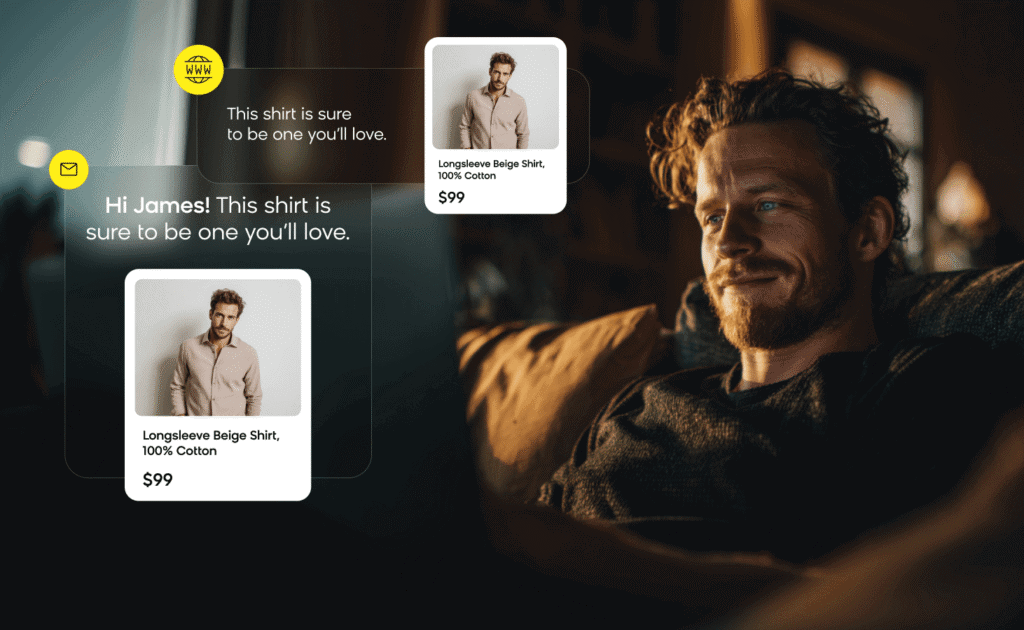
Contextual journey adaptation adjusts communication strategies based on customer behavior patterns to maximize lifetime value. Loomi AI interprets engagement signals to determine optimal channel mix for individual customers. High email engagers might receive detailed newsletters, while mobile-first customers get concise SMS updates with app deep links, ensuring each touchpoint drives maximum impact.
Cross-channel personalization maintains context across all touchpoints like a knowledgeable sales associate who remembers every previous interaction. Your customer’s email preferences influence their website experience, SMS timing, and push notification content. This unified approach eliminates the disconnected experiences common with multi-vendor marketing stacks while improving customer satisfaction and conversion rates.
Why Email-Only Thinking Kills Performance
Traditional email-first approaches miss the majority of customer interactions that influence purchase decisions. Modern customers research products on mobile devices, discuss options on social media, visit physical stores, and complete purchases through multiple channels — often within the same day.
Intelligent platforms recognize these complex journey patterns and coordinate messaging across touchpoints to maximize conversion opportunities while providing the consistent, personalized experience customers expect from leading brands.
Real Brands, Real Revenue: The ROI Numbers That Matter
Theoretical advantages mean nothing without proven results. Enterprise brands using Bloomreach consistently achieve exceptional performance improvements that demonstrate the tangible business value of agentic email marketing approaches.
These case studies represent real implementations at enterprise scale, showing how intelligent email marketing translates into measurable business outcomes.
How Desigual Personalizes Campaigns on a Global Scale
Fashion brand Desigual reaches customers in over 100 markets, making it difficult to create personalized campaigns that could speak to each individual’s preferences, location, language, and more.
With Bloomreach, Desigual was able to use dynamic email templates that could automatically personalize content based on customer data. Thanks to this AI-driven automation, the brand has been able to reduce campaign creation time by 75% and send over 80 personalized campaigns across 72 countries. By scaling up with AI, Desigual can now seamlessly personalize its communications around the world.

Ultimate Performance Uses Insights To Power Omnichannel Success
Global personal training business Ultimate Performance wanted an omnichannel approach to meet its customers’ behaviors and preferences, but was running into issues with siloed data sources.
By switching to Bloomreach, Ultimate Performance could consolidate all of its channels and marketing tools into a single solution powered by real-time data. This allows the brand to go beyond a single channel to deliver personalized campaigns across email, SMS, push notifications, and WhatsApp.
With an omnichannel approach, Ultimate Performance has seen channel-specific lifts, including an 11% increase in click rates and a 23% increase in click-to-open rates on personalized emails.

The Transition: From Automation to Intelligence
In order to drive success as an enterprise brand, you need to move away from marketing automation and start embracing agentic AI. These AI agents can respond intelligently to customer behavior rather than following predetermined rules — fundamentally changing how you approach customer engagement.
This transition requires both technological upgrades and strategic mindset shifts that position your marketing team for long-term competitive advantage in an increasingly AI-driven marketplace.
How Intelligent Systems Think Differently
Traditional automation follows if-then logic: if a customer abandons a cart, send email sequence A. If they purchase, trigger sequence B. These rigid workflows can’t adapt to nuanced customer behaviors or changing market conditions that impact conversion rates.
Agentic marketing, on the other hand, uses AI to interpret customer intent and respond contextually, like having an intuitive sales professional who understands each customer’s unique needs. Instead of following scripts, the system evaluates multiple signals — recent browsing behavior, purchase history, channel preferences, timing patterns — to determine the optimal next action for each individual customer that maximizes engagement and revenue.
Your Evolution as a Modern Marketer
You must now operate as an orchestrator rather than a programmer. Instead of building complex automation rules, you guide AI systems that handle execution complexity. This evolution enables your marketing team to focus on strategy, creative direction, and customer experience design while AI manages tactical implementation that drives measurable results.
Key mindset shifts for maximum impact:
- From segment management to experience orchestration that drives retention
- From campaign production to journey guidance that improves lifetime value
- From manual optimization to AI collaboration that accelerates performance
- From channel specialization to omnichannel thinking that maximizes touchpoint effectiveness
By working alongside AI agents, acting as more of an air traffic controller than the pilot, you’ll be able to develop high-impact strategies while saving yourself hours of manual work.
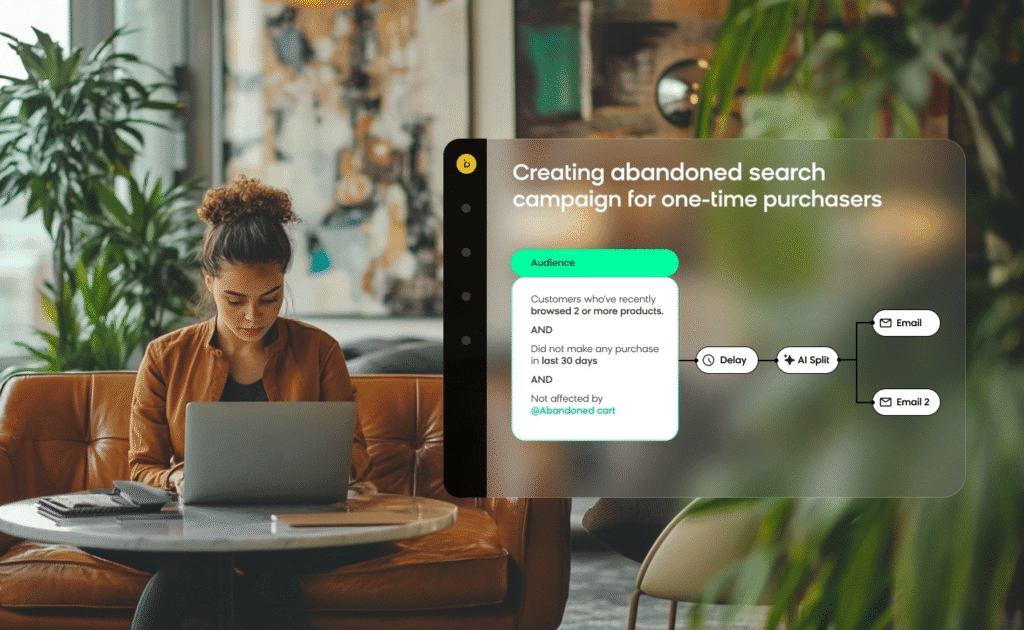
Is Your Platform Holding You Back? The 5-Question Audit
Many enterprises continue using email platforms that can’t support modern customer expectations, limiting revenue potential and team productivity. Evaluating your current capabilities against modern requirements helps determine whether platform evolution is necessary to get you a competitive advantage.
This assessment framework helps you effectively evaluate whether your current email marketing technology can support the intelligent, omnichannel experiences that drive superior business results.
Critical Capability Assessment
1. Can your system unify and act on data in real time? If customer actions on your website don’t immediately influence email content and timing, your platform creates disconnected experiences that reduce engagement and conversion rates. Real-time data processing is essential for maximizing each customer interaction’s revenue potential.
2. Can it auto-generate and optimize content at scale? Manually creating email variations for different audience segments limits personalization depth and campaign frequency while consuming excessive resources. Modern platforms should produce and test content automatically to improve efficiency and results.
3. Does it let marketers launch journeys without IT involvement? Email marketing velocity demands marketer independence for competitive advantage. Requiring development resources for journey updates creates bottlenecks that reduce campaign effectiveness and market responsiveness while increasing operational costs.
4. Can it coordinate experiences across all relevant channels? Email-only thinking misses the majority of customer interactions that drive revenue. Platforms should orchestrate consistent experiences across email, SMS/MMS, web, mobile apps, and emerging channels like WhatsApp to maximize engagement and conversion rates.
5. Does it adapt to customer behavior rather than following rules? Rule-based automation can’t handle the complexity of modern customer journeys that span multiple touchpoints. AI-powered platforms respond to behavioral patterns and intent signals that static workflows miss, improving relevance and performance.
The Investment Reality
Enterprise technology decisions increasingly favor AI-native platforms that deliver measurable business value. 56% of B2B marketers’ organizations have AI at high to medium on their list of priorities, with email personalization representing a key focus area due to proven ROI improvements.
Companies that delay this transition risk falling behind competitors who can deliver more relevant, responsive customer experiences through intelligent automation that drives superior business results.
Your Next Steps: Getting Started With Bloomreach Engagement
Enterprise marketing transformation starts with understanding how agentic platforms work in practice. Bloomreach offers multiple ways for your marketing team to explore AI-powered email marketing capabilities and see results from similar organizations in your industry.
Taking the first step toward intelligent email marketing doesn’t require a complete platform overhaul — you can explore capabilities and see proven results before making strategic technology decisions.

Evaluation Resources
Personalized demo: Schedule a customized walkthrough that demonstrates how Loomi AI orchestrates intelligent customer journeys based on your industry and use cases. See real-time personalization, omnichannel coordination, and autonomous optimization in action with examples relevant to your business challenges.
Interactive product tour: If you don’t want a full demo, you can also explore Bloomreach Engagement’s capabilities through guided, hands-on tours covering data unification and various use cases.
Implementation Approach
Bloomreach implementations typically begin with core email capabilities before expanding to full omnichannel orchestration. This phased approach allows your marketing team to demonstrate value quickly while building expertise with AI-powered tools that improve performance incrementally.
- Phase 1: Email personalization and basic journey automation for immediate ROI
- Phase 2: Cross-channel coordination with SMS and web for enhanced customer experience
- Phase 3: Advanced AI content generation and predictive optimization for scale efficiency
- Phase 4: Full agentic orchestration across all customer touchpoints for maximum revenue impact
Most enterprises see significant performance improvements within initial implementation phases, with full platform capabilities supporting long-term strategic growth that compounds results over time.
The Future Is Agentic — Your Results Are Waiting
Enterprise email marketing success in 2025 and beyond requires platforms built for intelligence, designed for marketers, and optimized for customer experience excellence that drives measurable business growth. The transition from automation to intelligence has begun — and the early adopters are already seeing transformational results.
The future belongs to marketing teams that embrace AI collaboration, focus on customer experience orchestration, and build scalable systems for delivering relevant, timely, and valuable communications. Email marketing provides the foundation for this transformation, but your vision should extend far beyond any single channel to maximize revenue impact.
Learn more about how Bloomreach puts the AI in email and helps enterprise brands stay ahead of the competition.
